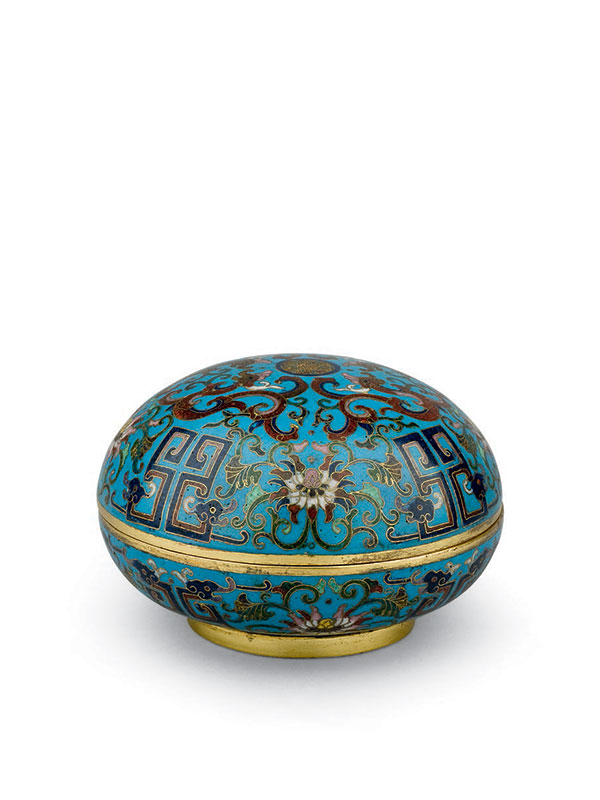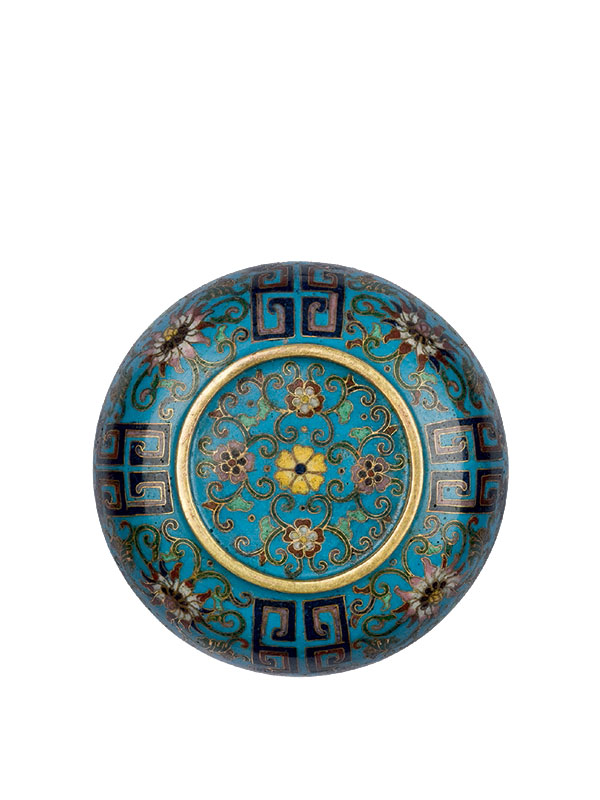Cloisonné enamel box
A circular cloisonné box supported on a short straight foot. The domed cover is decorated in coloured enamels on a turquoise ground with four chi dragons roaming above lotus flowers and with paired key-fret patterns ending in dragon’s heads. The sides of the box are similarly decorated with lotus flowers interspersed with key-fret patterns, but here in a mirrored arrangement. The recessed base is adorned with flowers interlinked with scrolling stems. The interior is covered in turquoise enamel. The rims and the foot of the box are covered in a thick layer of gilding.
Cloisonné enamel objects were intended primarily for the furnishing of temples and palaces, where their brightly coloured splendour was considered appropriate for the surroundings. By the mid-Qing dynasty Chinese craftsmen fully exploited the cloisonné technique to create vibrantly coloured wares. Circular cloisonné enamel boxes of this size are commonly used as incense powder boxes, as part of the ‘Three Friends of Incense’ – the incense tool vase, incense burner and incense powder box. A comparable cloisonné enamel box of circular form and decorated with lotus flowers and scrolling stems, forming part of an incense utensil set, is in the collection of the Palace Museum, Beijing.[1]
1 Zhang, Li, Compendium of Collections in the Palace Museum: Enamel 3, Cloisonné in the Qing Dynasties (1644 -1911), The Forbidden City, Beijing, no. 5, pp. 32-3
銅胎掐絲琺瑯拐子龍紋圓盒
清 十八 世紀
徑:10.5 公分 高:6.5 公分
蒸餅式圓盒,子母口,深壁,矮圈足。全器淺藍地,器內施藍釉,以掐絲技法於蓋面及盒側飾番 蓮紋與拐子龍紋,器底飾團花紋,口緣與足緣加飾鎏金。清中期以降,掐絲琺瑯技法已完全成熟,此類圓盒多與爐、瓶組成香道用具一組。北京故宮博物院與臺北國立故宮博物院均藏有類似圓盒。


